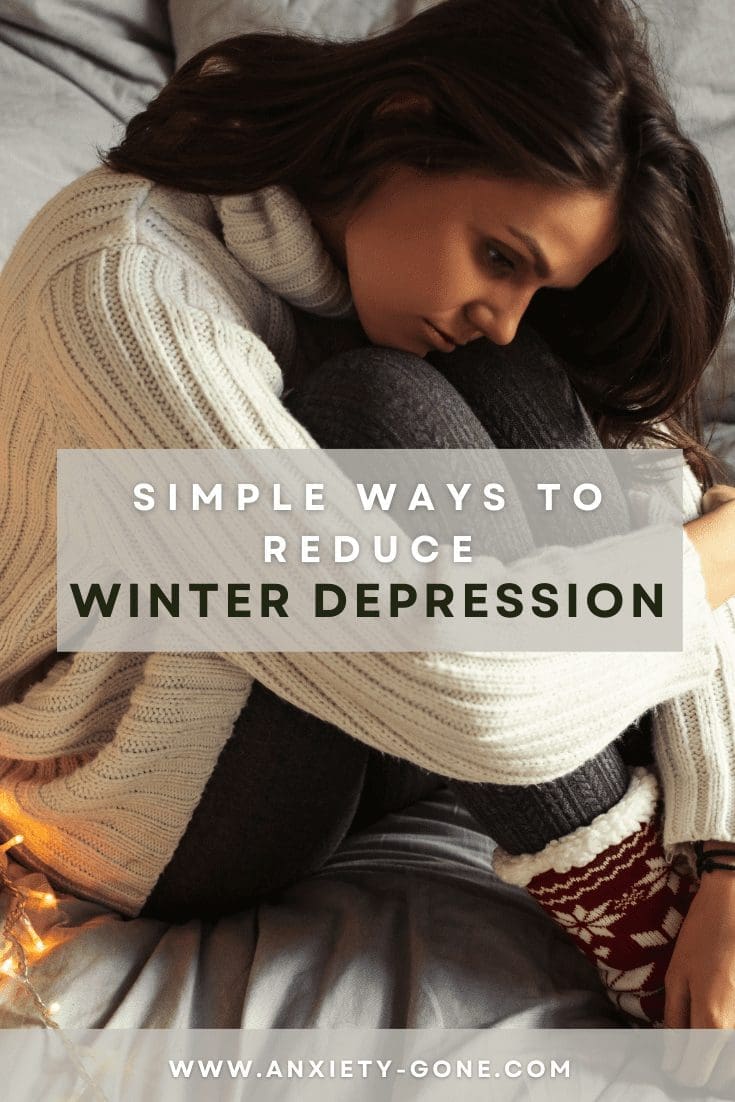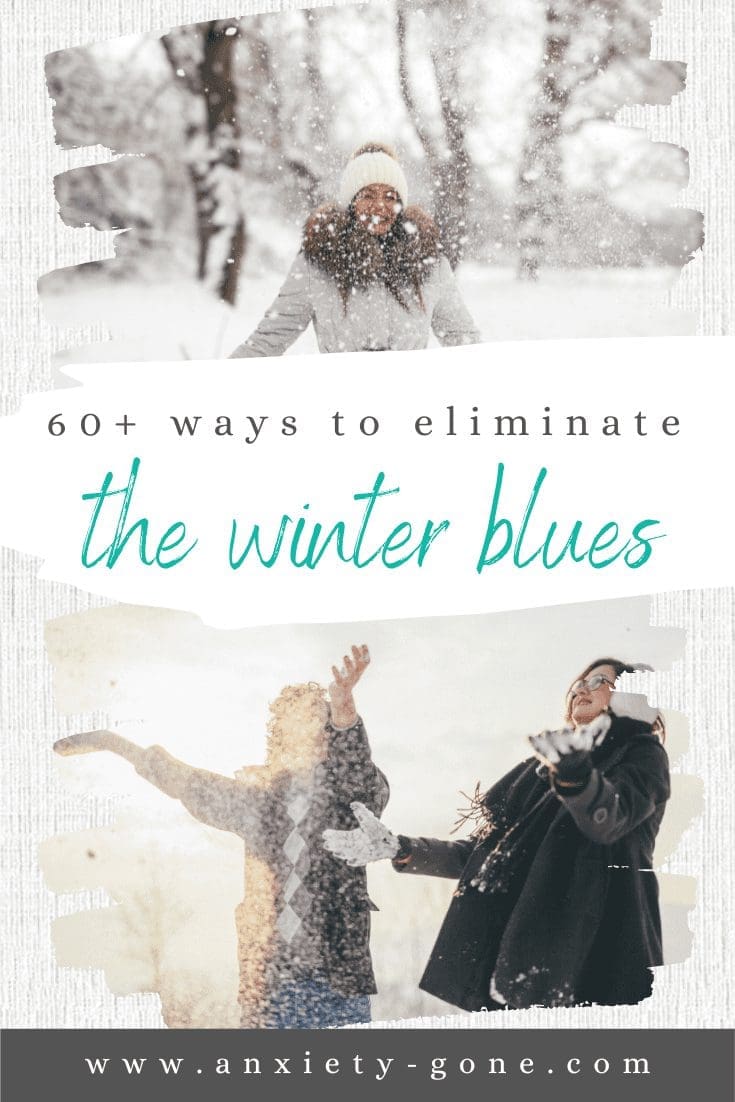Full Disclosure: Clicking on these links could mean a tiny commission for me, at no extra cost to you.
Advertisement
Feeling Stuck or Overwhelmed?
You don’t have to navigate it alone. With BetterHelp, you can connect with a licensed therapist who gets it, all from the comfort of your own space.
It’s flexible, private, and designed to fit into your life. Get matched in minutes and start feeling supported, whether you're managing anxiety, stress, or just trying to find your footing again. Plans start at $65/week. No waiting rooms. No judgment. Just real help, when you need it.
What is Seasonal Affective Disorder?
Seasonal Affective Disorder, or what is commonly referred to as SAD, is a mental health condition where one experiences anxiety or depression or worsened anxiety and depression during a specific season.
Typically, seasonal affective disorder is experienced during the winter months when the days are shorter. There’s less sun exposure, you’re not spending as much time outdoors or being active, and well, everything is dark and dreary. All of these things play a significant role in your overall mental health. When they’re all lumped together into one season, seasonal depression and anxiety, or rather, SAD, can occur.
Now, although SAD is usually experienced during the winter, it’s important to note that it can be experienced with any season. For example, some people experience summer seasonal affective disorder instead and feel their best during the winter. The same can be said for the fall and spring. Winter just happens to be the most common season where SAD is experienced..
Who is at risk for developing SAD?
SAD can affect anyone, even those who have never experienced a mental health difficulty before or who have not been diagnosed with depression or anxiety at all. However, it is believed that people with pre-existing mental health conditions, such as anxiety and depression, are more susceptible to developing seasonal affective disorder.
Some additional risk factors for SAD are:
- Sex: Women tend to be more at risk
- Location: People who live in Northern countries or states or far south of the equator
- Family history: People who have a close relative who suffers from SAD
- Pre-existing mental health conditions: People who already suffer from depression or anxiety
- Age: People aged 15-55 are more likely to develop SAD (it typically decreases with age)
Causes of Seasonal Affective Disorder
There are various factors that can contribute to the development of seasonal anxiety and seasonal depression. The main cause, however, is due to the environmental changes that come with a particular season. For example, during the winter season when people are more likely to experience SAD, you receive far less sunlight than you would during the other seasons. The days are shorter and you’re not spending as much time outdoors. For summer seasonal affective disorder, the intense heat and humidity is believed to be a major cause. And if you’ve ever felt your mood shift from getting fresh air or having great weather, it’s easy to see how unideal weather can do quite the opposite.
Some additional factors that can contribute to SAD include:
- Disruption of sleep patterns: Your sleep patterns may become disrupted during the winter months, as your circadian rhythm can get confused with it still being dark when you wake up.
- Lack of sunlight: Winter days tend to be cold, dark and dreary with limited sunlight. This can result in lower serotonin levels (your brain’s mood-boosting hormone), as exposure to sunlight is said to increase the brain’s release of serotonin.
- Production of melatonin: When it’s dark out, your body produces more melatonin ( a sleep-related hormone), which can contribute to SAD.
- Less physical activity: People tend to be less physically active during the winter months or extremely hot summers, which may contribute to SAD.
- Comfort foods: Many commonly-enjoyed fruits and vegetables aren’t in season during the winter months, which can result in people not eating enough nutritious foods. Additionally, indulging in comfort foods, particularly those high in carbs and sugar, to bring some comfort into the season can affect your mental health. Try a custom-made wellness plan here.
- Lack of fresh air: Since you aren’t spending near as much time outdoors, you aren’t getting as much fresh air as you’re used to.
- Low air quality: With your windows and doors being sealed shut for several months at a time, the air quality in your home can become decreased, affecting your mental health and wellness.
Seasonal Affective Disorder Symptoms
SAD can affect everyone differently. Some people will experience increased anxiety and depression, whereas others will feel more lethargic and fatigue. Some may have difficulty sleeping or feel a loss of interest in things they used to enjoy. Many of the symptoms of seasonal affective disorder as similar to that of anxiety and depression but the main difference is that they tend to increase during a specific season, such as winter or summer.
Some common signs you may be struggling with SAD are:
- Increased anxiety, moodiness, and irritability
- Increased sleep and daytime drowsiness
- Feelings of hopelessness
- Loss of interest and pleasure in activities previously enjoyed
- Social withdrawal
- Fatigue, or low energy level
- Decreased sex drive
- Difficulty focusing or concentrating
- Trouble thinking clearly
- Weight gain
- Increased appetite, especially for sweets and carbs
- Physical sensations, such as headaches
Advertisement
⚡ Access Treatment Right Now
→ Online Therapy – Talk to a licensed therapist today through BetterHelp. Affordable, private, and convenient therapy starting at $65/week. Take the Free Assessment to get matched now.
→ Digital Psychiatry – Connect with a provider in 12–48 hours via Hims/Hers. Explore FDA-approved medication options — no insurance required. Get Started Today.
Treatment for SAD
Just like anxiety and depression, there are various forms of treatments for seasonal affective disorder that can help you get back to feeling like yourself again. The treatment for summer depression may differ from the treatment for winter depression, so it’s important to speak with your healthcare provider if you’re having difficulties managing your symptoms. However, some typical SAD treatments are:
- Incorporating Self-Care Practices: A self-care routine can help alleviate the symptoms of SAD by encouraging relaxation and boosting your mood.
- Manage Stress and Anxiety: Consider adopting stress management techniques, such as using fidget rings to help ground your focus during moments of stress or anxiety. Our spinner rings are stylish and functional pieces of jewelry that allow you to de-stress, relax and discreetly fidget to release nervous energy.
- Exposure to Sunlight: Spending more time outside or near a sunny window (a minimum of 15 minutes a day) can help relieve symptoms of SAD.
- Light therapy: Exposure to a special light, commonly referred to as a seasonal affective disorder lamp, for a specific amount of time each day can replicate sunlight to give you a similar mental health boost.
- Psychotherapy. Cognitive-behavioral therapy can help change any distorted views or unhealthy thoughts you may have of yourself and the environment around you. Speaking with a therapist will also help you develop coping techniques to help you get through those difficult moments. With online therapy, you don’t have to go outside and brave the cold either.
- Antidepressants. Prescription medicines can help fix the chemical imbalance that may be contributing to SAD.
Additional Tips for Easing Seasonal Depression
Making a few simple adjustments in your daily habits can make a significant impact on your overall mental health and wellness. This can be as simple as getting some indoors plants for mental health to help increase the air quality in your home or starting an online yoga class for anxiety and depression.
We have a comprehensive list of 60 ways to improve seasonal depression, but here are a few of our favourite ways to boost your mental health and ease winter depression (and summer depression, too):
- Speak with a professional: If you are struggling with seasonal depression, see a healthcare provider as soon as possible. Online therapy is an excellent, affordable option that you can do right now and right from the comfort of your home.
- Make time for loved ones: Make plans with your friends and set out some time for your loved ones. It will give you an extra boost, and it is often better than suffering in silence.
- Try some seasonal activities: The best way to make the season seem less dreadful is to find something that you can do that makes it more fun and enjoyable. Think about skiing and ice skating in the winter, or camping or beach-hopping in the summer.
- Do the things you like to do: While losing interest in the things you enjoy doing can be a symptom of SAD, try to combat this by continuing to do the things you previously liked doing, whether it’s going to the movies, gardening, going for walks, etc.
- Stay active: Sign up for that online yoga class, head to an indoor track for a daily walk or lift some weights at the local gym. Getting in some regular exercise will instantly boost your dopamine levels. (Get 50% off your online yoga classes here)
- Take some supplements: Vitamin D and magnesium are must-have supplements for managing mental health.
-
Final Thoughts on Seasonal Affective Disorder
Additional Resources
At Anxiety Gone, we believe in healing together. We’ve partnered with trusted wellness organizations to bring you the most effective tools, insights, and support. Some links may earn us a commission — always at no extra cost to you.
Join The Club
Connect with our private self-care community for daily support, exclusive tips, and inspiration. Join us today
Talk Therapy
Get matched with licensed therapists online through BetterHelp and begin your healing today. Start now
Hims/Hers
Receive personalized, affordable mental health care + medication from home — no insurance required. Learn more
Mental Health, Right to your Inbox
Subscribe to our newsletter for a place to rest your mental health and find ways to support your journey. Sign up
Emotional Freedom Technique
Tap your way to calm with scientifically backed stress relief. Our readers receive a 14-day free trial! Try EFT now
Mindfulness App
Access 2,000+ guided practices to support your mental health wherever you are + exclusive discount when you upgrade Try it
Online Breathwork
Experience calm and reset your nervous system with guided sessions and receive your first month free . Get started
Find a Helpline
If you need immediate support, visit our directory to find help near you. See helplines











